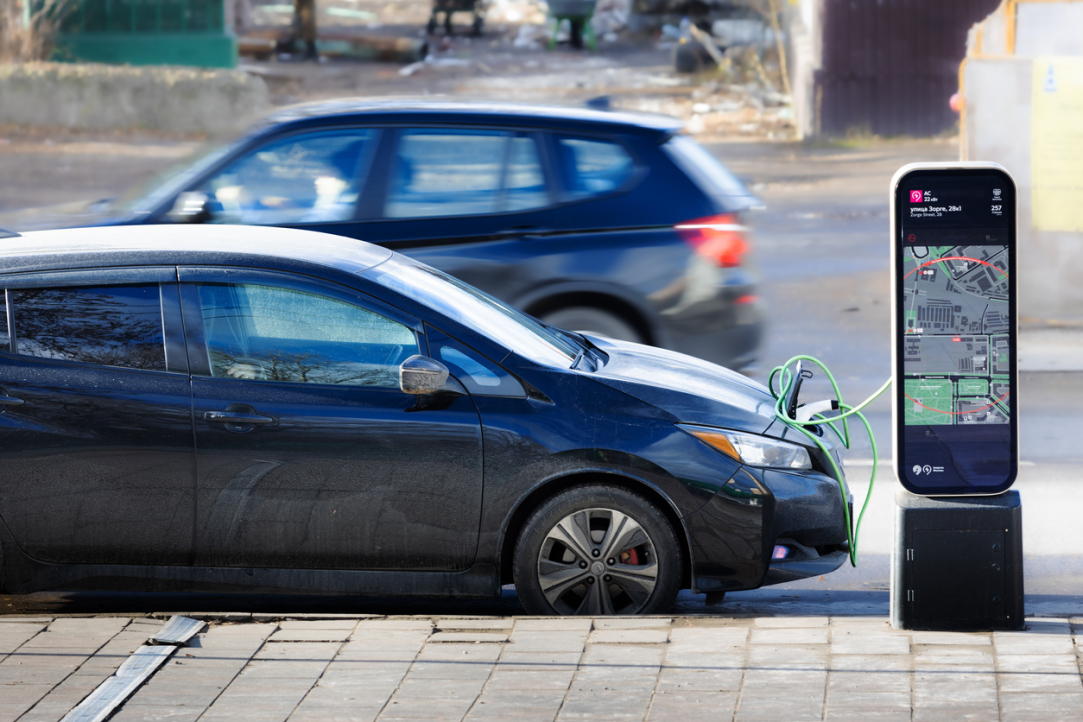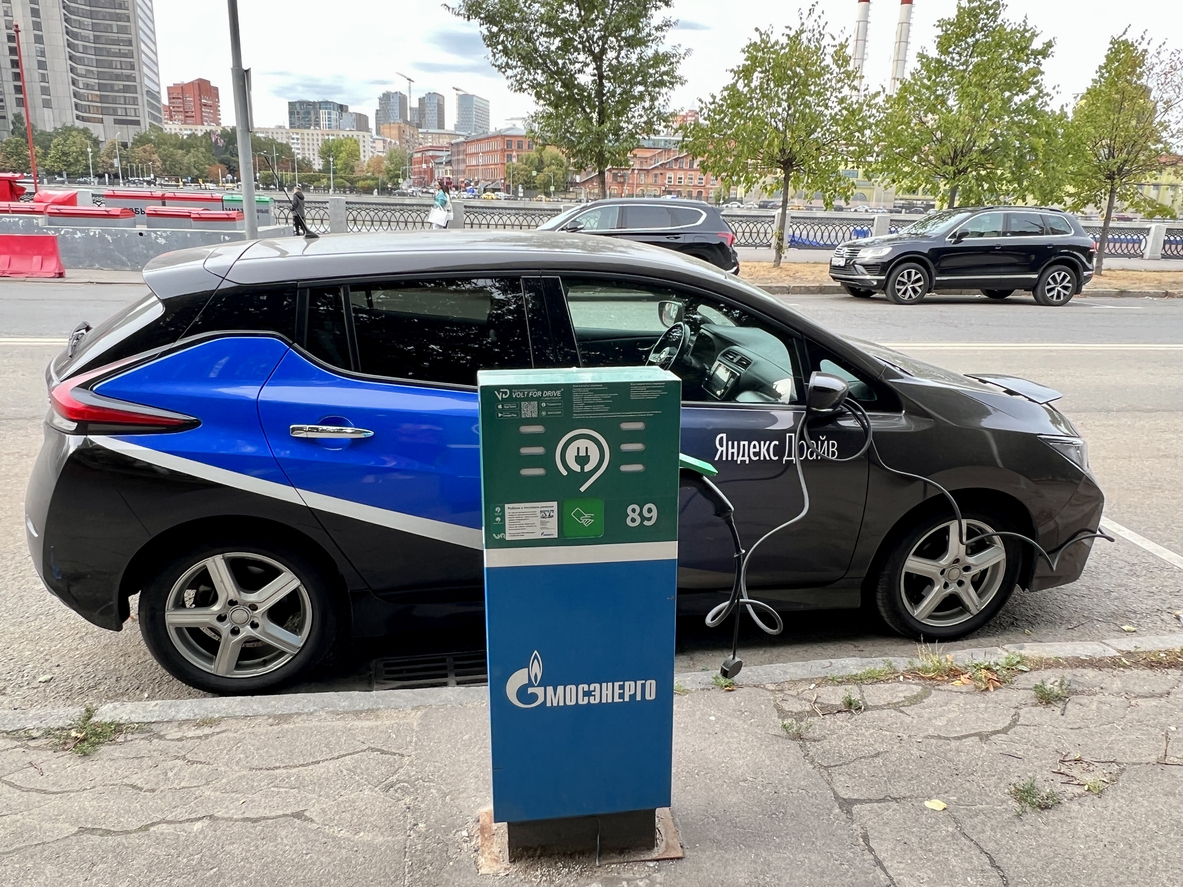HSE Experts Highlight Factors Influencing EV Market Growth

According to estimates from HSE University, Moscow leads in the number of charging stations for electric vehicles in Russia, while Nizhny Novgorod ranks first in terms of charging station coverage, with 11.23 electric vehicles per charging station, compared to 14.41 in Moscow. The lack of charging infrastructure is one of the key factors limiting the growth of the electric vehicle market. This is stated in the study titled ‘Socio-Economic Aspects of Introducing Electric Vehicles in Commercial Transportation’ conducted by experts from the Institute of Transport Economics and Transport Policy Studies at HSE University.
The use of electric vehicles (EVs) significantly reduces fuel and maintenance costs, while also offering incentives for owners, making electric transport economically viable. The main challenges holding back the growth in the number of EVs include limited driving range, rapid battery degradation, substantial initial investments, and rising operating costs. According to experts at HSE University, further promotion of EV use requires support measures such as localising production, offering incentives for purchasing EVs, increasing the number of charging stations, and implementing flexible electricity tariffs.
By the end of 2024, 59,600 electric vehicles were registered in Russia, marking a 225% increase in their number since 2015. According to experts, the growth in electric car sales in Russia in 2024 was primarily driven by Chinese manufacturers and the Moskvich Moscow Automobile Plant.

At the same time, imports of new and used electric vehicles declined by 34% and 22%, respectively, between 2022 and 2023, while large-scale localisation of new models remains constrained by strict regulations.
Experts at HSE University warn that a further reduction in government support and tighter import restrictions could slow the growth of the EV market.
Infrastructure and Regional Factors
According to experts, expanding the charging infrastructure network remains a major factor in the widespread adoption of electric vehicles. Currently, Moscow has the largest number of charging stations in the country, but Nizhny Novgorod ranks first in terms of charging stations relative to the number of electric vehicles. By 2030, the number of stations in Moscow is expected to reach 12,000, with the electric vehicle fleet growing to 300,000.
At the same time, electric vehicles remain a practical mode of transport mainly for large cities and metropolitan areas that actively support their adoption and invest in expanding the infrastructure network. According to estimates, the total cost of owning an electric vehicle may be lower than that of a conventional one, but in practice, much depends on operating conditions, battery degradation rates, and the availability and scope of government support—for example, the costs of adopting electric vehicles remain significant for commercial companies.

Director, Centre for Transportation Planning, Institute for Transport Economics and Transport Policy Studies
'According to current national policy documents, within ten years, the EU, the UK, Israel, and 25% of US states are expected to ensure that 100% of vehicle sales are zero-emission, while Japan and Singapore aim to achieve 100% electric vehicle sales. However, rapid growth in this segment driven solely by battery electric vehicles (BEVs) may face an alternative path: in countries where internal combustion vehicles remain widespread, the transition is likely to occur through increased adoption of hybrid vehicles, which are classified as EVs based on certain operating parameters but still retain the ability to use fossil fuels.'
See also:
Civic Identity Helps Russians Maintain Mental Health During Sanctions
Researchers at HSE University have found that identifying with one’s country can support psychological coping during difficult times, particularly when individuals reframe the situation or draw on spiritual and cultural values. Reframing in particular can help alleviate symptoms of depression. The study has been published in Journal of Community Psychology.
Scientists Clarify How the Brain Memorises and Recalls Information
An international team, including scientists from HSE University, has demonstrated for the first time that the anterior and posterior portions of the human hippocampus have distinct roles in associative memory. Using stereo-EEG recordings, the researchers found that the rostral (anterior) portion of the human hippocampus is activated during encoding and object recognition, while the caudal (posterior) portion is involved in associative recall, restoring connections between the object and its context. These findings contribute to our understanding of the structure of human memory and may inform clinical practice. A paper with the study findings has been published in Frontiers in Human Neuroscience.
Researchers Examine Student Care Culture in Small Russian Universities
Researchers from the HSE Institute of Education conducted a sociological study at four small, non-selective universities and revealed, based on 135 interviews, the dual nature of student care at such institutions: a combination of genuine support with continuous supervision, reminiscent of parental care. This study offers the first in-depth look at how formal and informal student care practices are intertwined in the post-Soviet educational context. The study has been published in the British Journal of Sociology of Education.
AI Can Predict Student Academic Performance Based on Social Media Subscriptions
A team of Russian researchers, including scientists from HSE University, used AI to analyse 4,500 students’ subscriptions to VK social media communities. The study found that algorithms can accurately identify both high-performing students and those struggling with their studies. The paper has been published in IEEE Access.
HSE Scientists: Social Cues in News Interfaces Build Online Trust
Researchers from the HSE Laboratory for Cognitive Psychology of Digital Interface Users have discovered how social cues in the design of news websites—such as reader comments, the number of reposts, or the author’s name—can help build user trust. An experiment with 137 volunteers showed that such interface elements make a website appear more trustworthy and persuasive to users, with the strongest cue being links to the media’s social networks. The study's findings have been published in Human-Computer Interaction.
Immune System Error: How Antibodies in Multiple Sclerosis Mistake Their Targets
Researchers at HSE University and the Institute of Bioorganic Chemistry of the Russian Academy of Sciences (IBCh RAS) have studied how the immune system functions in multiple sclerosis (MS), a disease in which the body's own antibodies attack its nerve fibres. By comparing blood samples from MS patients and healthy individuals, scientists have discovered that the immune system in MS patients can mistake viral proteins for those of nerve cells. Several key proteins have also been identified that could serve as new biomarkers for the disease and aid in its diagnosis. The study has been published in Frontiers in Immunology. The research was conducted with support from the Russian Science Foundation.
Scientists Develop Effective Microlasers as Small as a Speck of Dust
Researchers at HSE University–St Petersburg have discovered a way to create effective microlasers with diameters as small as 5 to 8 micrometres. They operate at room temperature, require no cooling, and can be integrated into microchips. The scientists relied on the whispering gallery effect to trap light and used buffer layers to reduce energy leakage and stress. This approach holds promise for integrating lasers into microchips, sensors, and quantum technologies. The study has been published in Technical Physics Letters.
HSE Scientists Test New Method to Investigate Mechanisms of New Word Acquisition
Researchers at the HSE Centre for Language and Brain were among the first to use transcranial alternating current stimulation to investigate whether it can influence the acquisition of new words. Although the authors of the experiment have not yet found a link between brain stimulation and word acquisition, they believe that adjusting the stimulation parameters may yield different results in the future. The study has been published in Language, Cognition and Neuroscience.
Twenty vs Ten: HSE Researcher Examines Origins of Numeral System in Lezgic Languages
It is commonly believed that the Lezgic languages spoken in Dagestan and Azerbaijan originally used a vigesimal numeral system, with the decimal system emerging later. However, a recent analysis of numerals in various dialects, conducted by linguist Maksim Melenchenko from HSE University, suggests that the opposite may be true: the decimal system was used originally, with the vigesimal system developing later. The study has been published in Folia Linguistica.
Scientists Rank Russian Regions by Climate Risk Levels
Researchers from HSE University and the Russian Academy of Sciences have assessed the levels of climate risks across Russian regions. Using five key climate risks—heatwaves, water stress, wildfires, extreme precipitation, and permafrost degradation—the scientists ranked the country’s regions according to their need for adaptation to climate change. Krasnoyarsk Krai, Irkutsk Region, and Sverdlovsk Region rank among the highest for four of the five climate risks considered. The study has been published in Science of the Total Environment.


